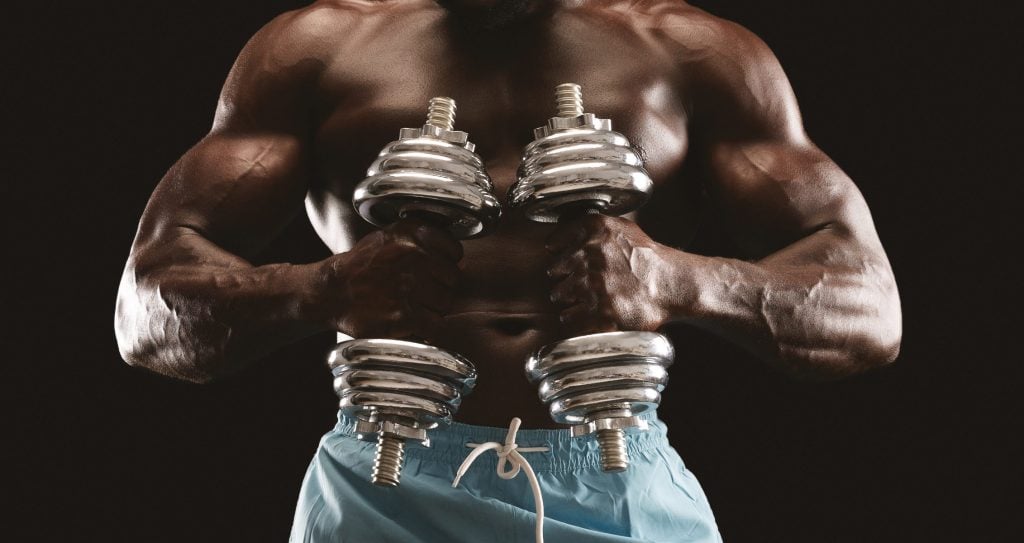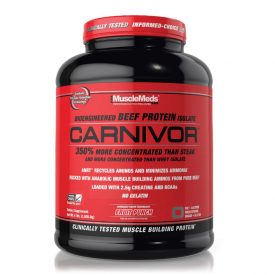Everything you need to know for your bulking and cutting needs.
For so many of us, we have that image of what we want to look like when we join a gym. While achieving your desired physique may seem cut and dry, it can be a real challenge in getting there, full of things like having a proper diet and training with intensity and a correct supplementation protocol. One of the hardest things to do though, is track your calories. Having the expertise to know what to do and how to do it. Sure, reading about fellow bodybuilders and athletes is a great tool, but everyone is different what works for them may not work for you; that can be discouraging.
However, if you take these components and break them down into only the essentials, you clear out the clutter that can overwhelm you. When it really comes down to it, there are only a handful of things that matter and each is manageable in efforts to get you to your goal. Between calories, basal metabolic rate, and daily intake requirements, with the right understanding, you will definitely be on your way to reaching those goals.
Our team at Generation Iron is going to take a look at this pocket guide for calories, basal metabolic rate, and daily intake requirements as we try our best to break down only the essentials, so you feel as though it is accomplishable. Because it is. It just takes a bit of time and understanding to really get there.
Calories Overview
A calorie is a way to measure energy expenditure, as well as stored energy. Carbs, fats, protein, fiber, amongst others, release energy through your metabolism, and in reaction with oxygen, energy is released. Kilocalories are referred to as calories in your diet, being those calories you eat, and calories through exercise, being those you burn away (1).
When it comes to your daily calories and caloric intake, it is important to understand that this is totally dependent on a number of factors: age, gender, activity level, genetics, and so on. We’ll look at this from three different activity levels being sedentary, moderately active, and active.
According to the United States Department of Agriculture Food and Nutrition Service, sedentary adults between the ages of 19-50 years old would require on average around 2,400 calories for men and 1,900 calories for women. Moderately active men would average around 2,600 calories while moderately active women are around 2,100 calories.
Moving into the active territory, they define this as walking more than 3 miles per day at 3 to 4 miles per hour, with light physical activity associated with the typical daily activity you already partake in. In this case, men would require around 2,900 calories and women average to about 2,300 calories (2).
What Is Basal Metabolic Rate?
Your basal metabolic rate is the total number of calories needed to function on a daily basis. This includes things like circulation, breathing, nutrient processing, protein synthesis, among others. This means ultimately that energy is used only to maintain vital organs. This works in tandem with your resting metabolic rate which measures the number of calories burned at rest (3).
A popular way to measure your basal metabolic rate is through the Harris-Benedict equation. The end result is the number of calories needed to maintain your current body weight based on sex, height, weight, and age requirements (4). This came from a study conducted by James Arthur Harris and Francis Gano Benedict and is a popular way to calculate this.
Harris-Benedict Equation
Men: BMR= 66.5 + 13.8(weight) + 5.0(height)- 6.8(age)
Women: BMR= 655.1 + 9.6(weight) + 1.9(height) – 4.7(age)
Important Daily Intake Requirements
We’ve already covered calories and how important it is to figure out your daily caloric intake. But to go further, let’s take a look at those vital macronutrients in protein, carbs, and fat. Macronutrients are those nutrients that we need in larger quantities to provide support for energy, metabolism, muscle growth, and overall development. As our body’s primary source of energy, these are needed in larger quantities to make up the majority of the calories we consume.
Protein
When it comes to fulfilling our protein needs, we need to remember that there are many ways to get protein into our bodies. For healthy adults, the recommended daily intake is 0.8-1.0 grams of protein/kg body weight (4).
Whole foods are always the way to go, and even those on a vegan diet can get adequate amounts of protein. But protein powders are a solid way to get that vital protein into our bodies, and with both whey and non-dairy proteins, everyone can benefit from a great protein powder (5).
MuscleMeds Carnivor
Carnivor is a 100% beef protein isolate that is fast digesting and great tasting for an effective non-dairy protein supplement.
Carbohydrates
When it comes to carb and carb sources, it is important to know that carbs are not bad. A common myth around nutrition is that carbs are stored as fat and will then only increase your body weight and reduce definition. Carbs are vital for a number of functions and must not be forgotten in your diet. It is recommended that the daily carb intake be around 45 to 65 percent of your total daily calories (4).
Fats
Fats are another thing that have a bad reputation but knowing there are different kinds of fats is very important. Fats are used for a number of bodily functions and neglecting them would be a terrible disservice to your overall health, wellness, and performance. Daily fat requirements are around 30% of your total day’s calories (4).
Why All This Matters
The amount of calories you consume, your basal metabolic rate, and your daily intake all contribute to your health, performance, and goals being met. Eating enough in the day is important and while it is easy to starve yourself and feel terrible throughout the day, you are hurting your gains, despite what you may have heard. Knowing the ins and outs of these three important components can lead to effective cutting and bulking, while also aiding in a better lifestyle overall.
Calories Wrap Up
This pocket guide to calories, basal metabolic rate, and your daily intake requirements will provide the blueprint for what you need to know to get started. Having the tools is half the battle and once you know what to, you can finally go and do it and see those desired goals become reality.
Let us know what you think in the comments below. Also, be sure to follow Generation Iron on Facebook, Twitter, and Instagram.
*Images courtesy of Envato
References
- Howell, S.; Kones, R. (2017). “‘Calories in, calories out’ and macronutrient intake: the hope, hype, and science of calories”. (source)
- United States Department Of Agriculture Food and Nutrition Service (2011). “Estimated Calorie Needs per Day by Age, Gender, and Physical Activity Level”. (source)
- McMurray, R.; Soares, J.; Caspersen, C.; McCurdy, T. (2015). “Examining Variations of Resting Metabolic Rate of Adults: A Public Health Perspective”. (source)
- Kansas State University. “What are My Calorie, Protein, Fat, & Carbohydrate Needs?”. (source)
- Cintineo, H.; Arent, M.; Antonio, J.; Arent, S. (2018). “Effects of Protein Supplementation on Performance and Recovery in Resistance and Endurance Training”. (source)













